For many gardens, August is a transition time between the height of summer blooms and the last show of fall flowers. For too many, July is the last month of significant blooms, but it doesn’t have to be that way. Planning your garden for a full season’s worth of color means matching plants to your site as well as finding those that shrug off late-summer heat. Here are some top choices for a variety of conditions.

Benjamin Vogt / Monarch Gardens
Blue Sage (
Salvia azurea)
Native from Utah through Nebraska and Michigan, south to Florida and New Mexico
Bees, butterflies and hummingbirds stop by this drought-tolerant stunner from August into September. Dry to medium soil in full sun is required, and pinching it back once or twice in May will keep it bushier with more blooms and less flopping. It can reach 4 to 6 feet tall if you don’t cut it back, and the taller height does make it easier for hummingbirds to get to.
See how to grow blue sage
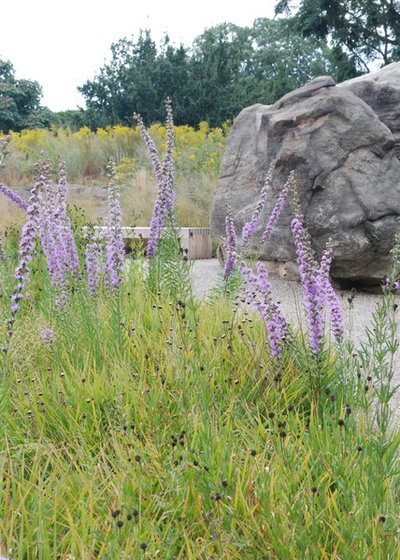
Paintbox Garden
Tall Blazingstar (
Liatris aspera)
Native from North Dakota south to Texas and east to Florida and Virginia
Medium to dry soil won’t hold back this heat-loving native. It’s a boon to pollinators in the month that sees the most butterflies. (That’s why so many butterfly counts are completed in August.) Reaching 3 to 5 feet tall, it works in clumps or as a single multistemmed specimen among lower plants — either way you can’t go wrong.
See how to grow tall blazingstar
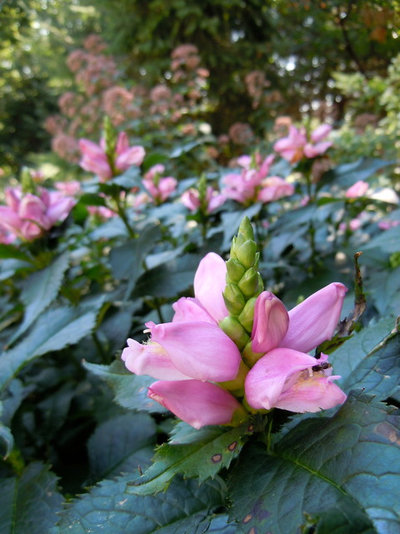
anne houser//dropseed studio//kinghorn gardens
Pink Turtlehead (
Chelone lyonii)
Native from Maine to Mississippi
Pink turtlehead is perfect for partial to full shade with consistent soil moisture. You’ll enjoy watching bumblebees fight their way in and out of the blooms. Glossy green leaves add interest all season long, and it stays around 2 feet tall and slowly spreads. ‘Hot Lips’ is the cultivar you’ll see for sale most often.
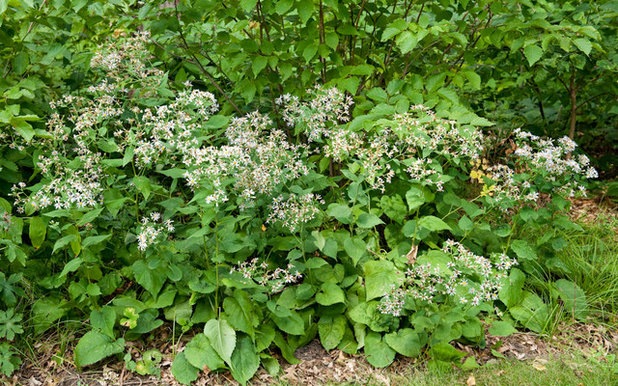
Holm Design & Consulting LLC
Bigleaf Aster(
Eurybia macrophylla)
Native from Minnesota east to Maine and south to Missouri and northern Georgia
Big leaves shade the soil and outcompete weeds with this early-blooming aster — early blooming for an aster. Fifty percent sun is best in a medium soil — a little bit wetter in more sun and a little bit drier in more shade. It makes a good ground cover, reaching about 2 feet tall and spreading moderately.
See how to grow bigleaf aster and asters native to other parts of the U.S.
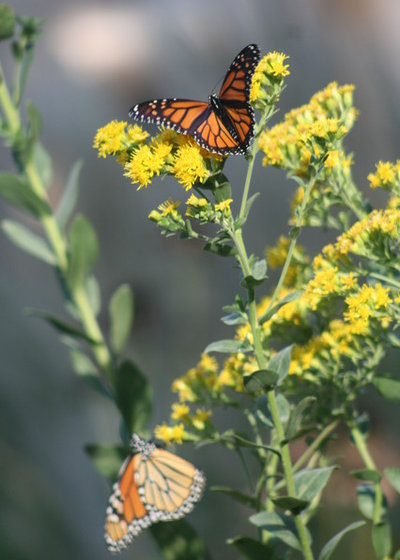
Benjamin Vogt / Monarch Gardens
Stiff Goldenrod (
Solidago rigida)
Native from Montana south to New Mexico and all points east
Like others in the family, stiff goldenrod is a pollinator lifeline. It prefers dry to medium soil and reaches about 4 feet tall, with multiple main stems topped by blooms. The leaves are a silvery green, a bonus to any designed space with too much plain green foliage.
See how to grow stiff goldenrod
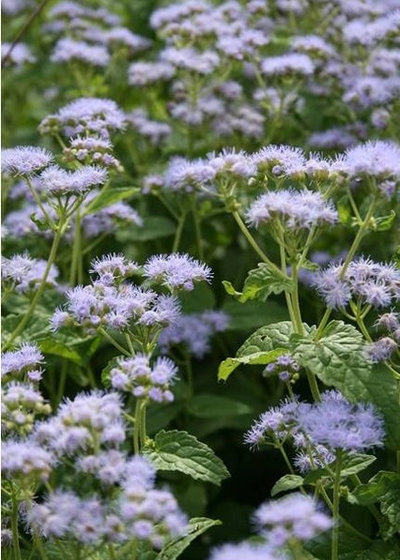
Benjamin Vogt / Monarch Gardens
Blue Mistflower (
Eupatorium coelestinum)
Native from Kansas south to Texas and all points east from New Jersey to Florida
Topping out at about 2 feet tall, this moderate spreader produces flowers that are highly attractive to bees and other insects, while also providing good yellow fall leaf color. Blue mistflower prefers consistent moisture in full to partial sun, so medium to slightly wet soil would work.
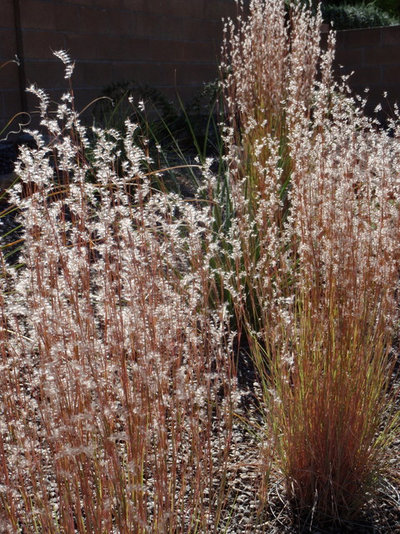
Waterwise Landscapes Incorporated
Little Bluestem (
Schizachyrium scoparium)
Native to every state in the U.S. except California, Oregon and Arizona
Grasses flower too, and mixing grasses with perennial flowers provides good habitat for wildlife and creates healthier gardens that require less maintenance. Little bluestem starts sporting its glittery seeds in August, which can last through most of the winter. It’s drought-tolerant and reaches 3 to 4 feet tall and 2 feet wide.
See how to grow little bluestem
Tell us: What are some of your favorite and dependable native flowers that bloom well in August? Upload photos to the Comments.





